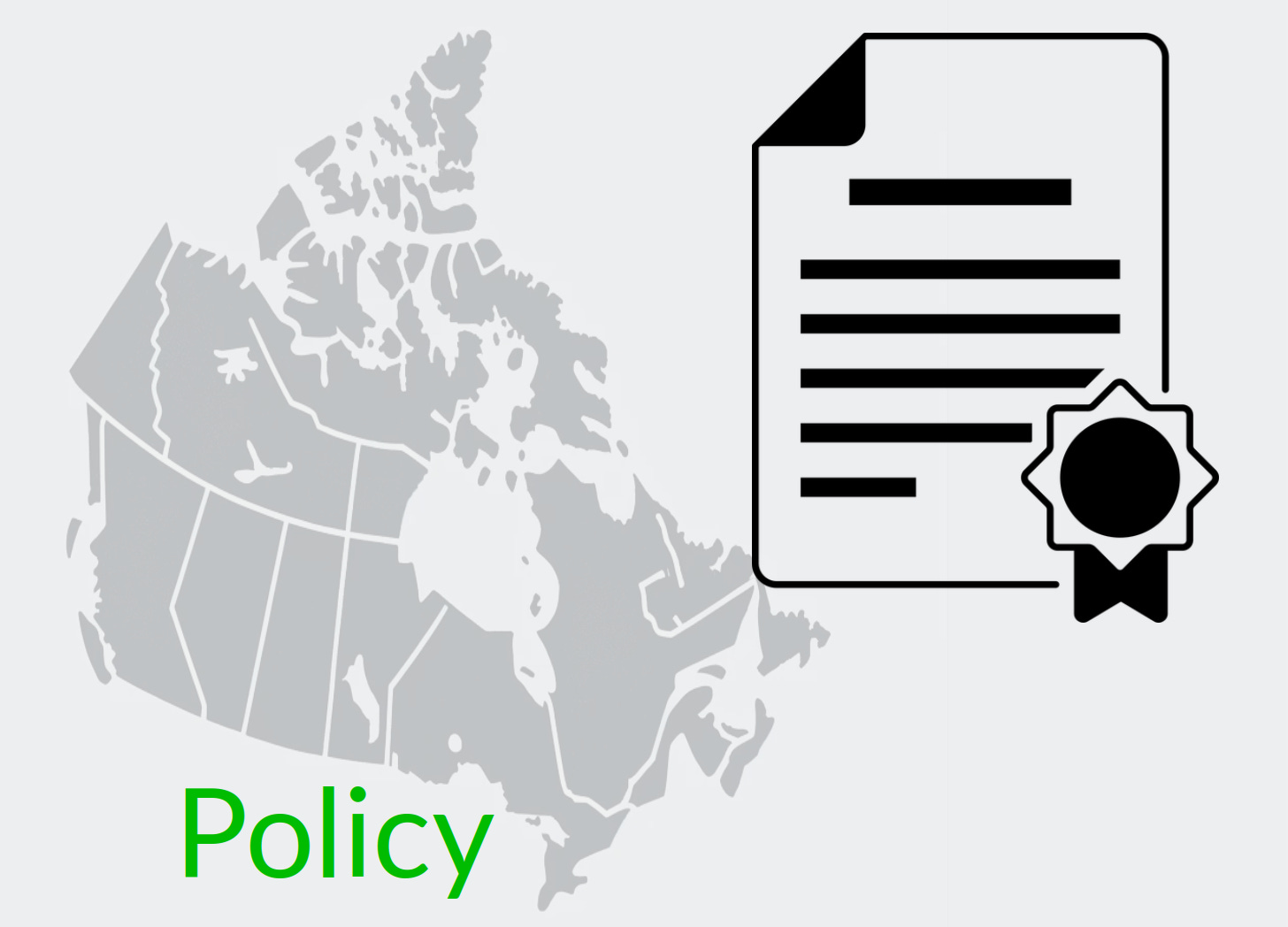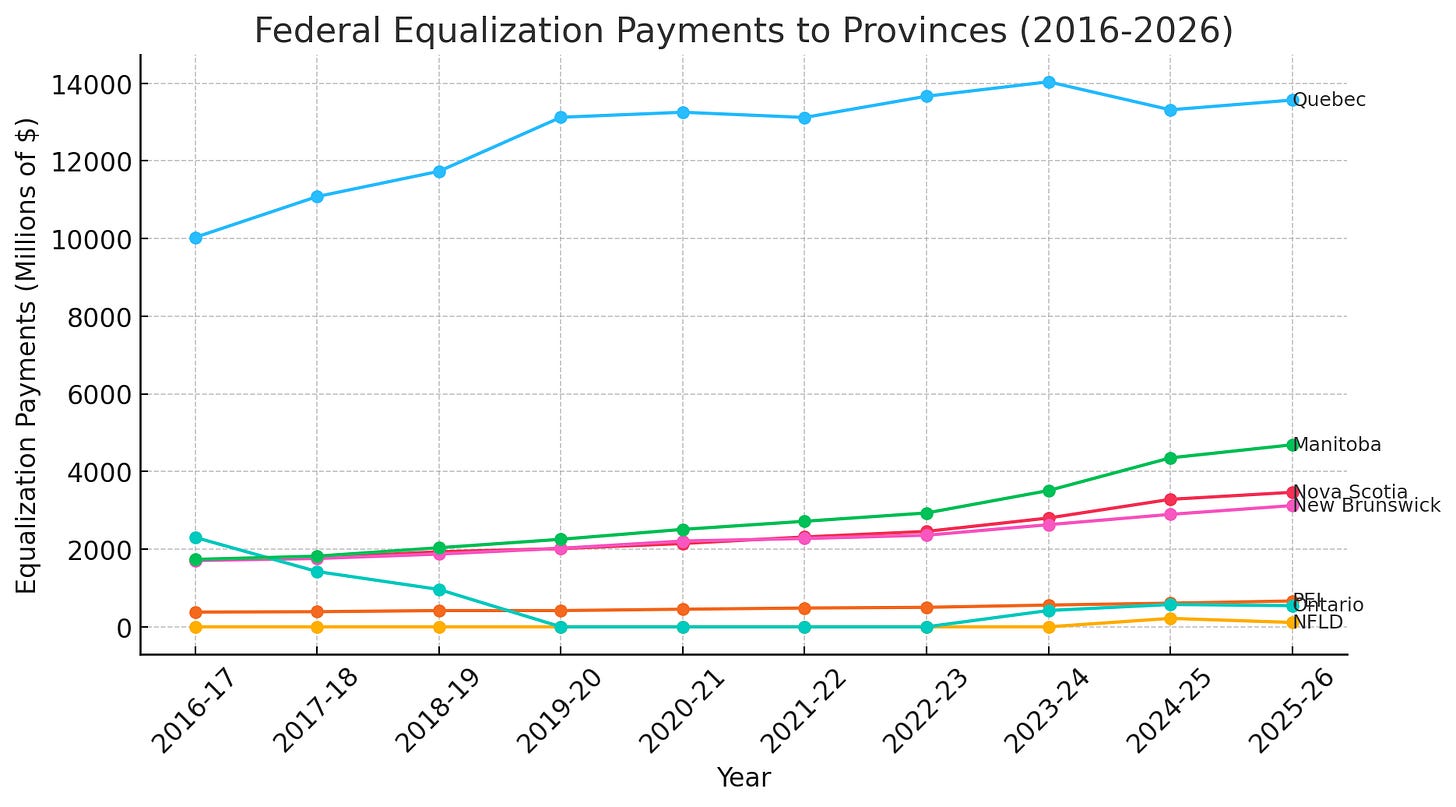Is Canada's Federation Fair?
Contrasting the principle of equalization with the execution
You’ll need to search long and hard to find a Canadian unwilling to help those less fortunate. And, so long as we identify as members of one nation1, that feeling stretches from coast to coast.
So the basic principle of Canada’s equalization payments - where poorer provinces receive billions of dollars in special federal payments - is easy to understand. But as you can imagine, it’s not easy to apply the principle in a way that’s fair, and the current methodology has arguably lead to a very strange set of incentives.
According to Department of Finance Canada, eligibility for payments is determined based on your province’s fiscal capacity. Fiscal capacity is a measure of the taxes (income, business, property, and consumption) that a province could raise (based on national average rates) along with revenues from natural resources. The idea, I suppose, is that you’re creating a realistic proxy for a province’s higher personal earnings and consumption and, with greater natural resources revenues, a reduced need to increase income tax rates.
But the devil is in the details, and I think there are some questions worth asking:
Whichever way you measure fiscal capacity there’ll be both winners and losers, so who gets to decide?
Should a province that effectively funds more than its “share” get proportionately greater representation for national policy2 - or at least not see its policy preferences consistently overruled by its beneficiary provinces?
The problem, of course, is that the decisions that defined equalization were - because of long-standing political conditions - dominated by the region that ended up receiving the most. Had the formula been the best one possible, there would have been little room to complain. But was it?
For example, attaching so much weight to natural resource revenues is just one of many possible approaches - and far from the most obvious. Consider how the profits from natural resources already mostly show up in higher income and corporate tax revenues (including income tax paid by provincial government workers employed by energy-related ministries)?
And who said that such calculations had to be population-based, which clearly benefits Quebec (nine million residents vs around $5 billion in resource income) over Newfoundland (545,000 people vs $1.6 billion) or Alberta (4.2 million people vs $19 billion). While Alberta’s average market income is 20 percent or so higher than Quebec’s, Quebec’s is quite a bit higher than Newfoundland’s. So why should Newfoundland receive only minimal equalization payments?
To illustrate all that, here’s the most recent payment breakdown when measured per-capita:

For clarification, the latest per-capita payments to poorer provinces ranged from $3,936 to PEI, $1,553 to Quebec, and $36 to Ontario. Only Saskatchewan, Alberta, and BC received nothing.
And here’s how the total equalization payments (in millions of dollars) have played out over the past decade:
Is energy wealth the right differentiating factor because it’s there through simple dumb luck, morally compelling the fortunate provinces to share their fortune? That would be a really difficult argument to make. For one thing because Quebec - as an example - happens to be sitting on its own significant untapped oil and gas reserves. Those potential opportunities include the Utica Shale formation, the Anticosti Island basin, and the Gaspé Peninsula (along with some offshore potential in the Gulf of St. Lawrence).
So Quebec is effectively being paid billions of dollars a year to not exploit their natural resources. That places their ostensibly principled stand against energy resource exploitation in a very different light. Perhaps that stand is correct or perhaps it isn’t. But it’s a stand they probably couldn’t have afforded to take had the equalization calculation been different.
Of course, no formula could possibly please everyone, but punishing the losers with ongoing attacks on the very source of their contributions is guaranteed to inspire resentment. And that could lead to very dark places.
Note: I know this post sounds like it came from a grumpy Albertan. But I assure you that I’ve never even visited the province, instead spending most of my life in Ontario.
Which has admittedly been challenging since the former primer minister infamously described us as a post-national state without an identity.
This isn’t nearly as crazy as it sounds. After all, as I write elsewhere, there are many groups of Canadians that one way or another get far more than a one-person-one-vote voice.




As a VERY grumpy Albertan, I commend your analysis.
Not for your conclusions (although I do agree with them) but rather for the simple fact of noting that there is room to ask about and to discuss the ideas of equity and fairness. Of course, I have my own conclusions but what absolutely annoys me (and many other Albertans) is that any time that we posit the idea that these things should be discussed, we are shouted down, deemed to be unpatriotic and so forth. So, if those who so call us those things really believe those assertions then perhaps we should oblige them and actually become so.
The system definitely needs reform. In addition to your points, I will add a west coast perspective. There are a huge number of folks from Alberta who retire to B.C. both in interior and on Vancouver Island. And very few BC residents who retire to AB in the other direction, at least in general.
Unfortunately for BC, we get these retired AB folks for their expensive medical years, but they’re retired and paying much lower taxes, and during their working years paid nothing into B.C. revenue for healthcare. I was in a golf group with a guy who retired here from AB who was complaining about this very topic of transfer payments and how AB was getting screwed, so I pointed out he was freeloading on BC taxpayers healthcare. Shut him up for a bit as he pondered that.